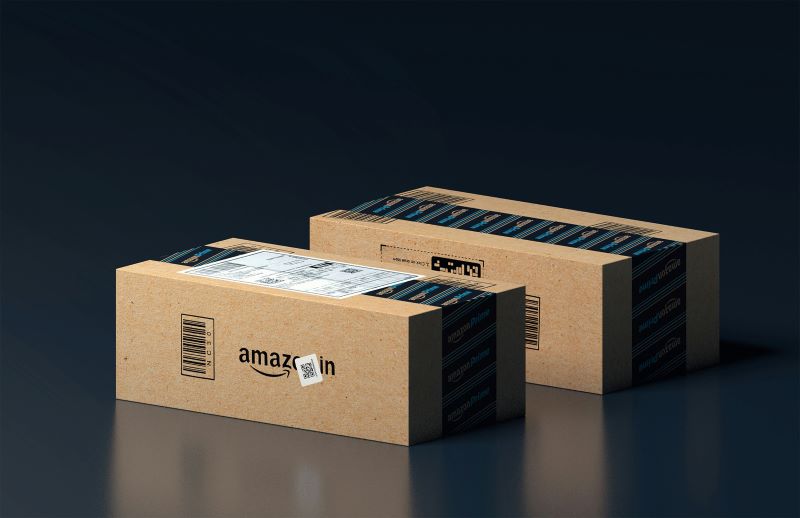For sellers, getting a handle on Amazon's barcode rules is key to making sure your products are listed correctly and can be easily tracked.
This guide will cover all you need to know about Amazon's barcode requirements, including those for FBA and the right sizes, so your business runs smoothly.

Why Barcodes Are Essential on Amazon?
Barcodes play a vital role in the logistics and inventory management of Amazon's marketplace.
They help streamline the process of identifying and tracking products from the moment they enter the fulfillment centers until they reach the customer.
Without adhering to Amazon barcode requirements, your products could face listing issues, delays, or even removal from the platform.
Types of Barcodes Accepted by Amazon
Amazon accepts several types of barcodes, but the most common ones used by sellers are:
1. UPC (Universal Product Code): This is the standard barcode for retail products in the United States. It is usually 12 digits long.
2. EAN (European Article Number): Commonly used in Europe, this barcode is 13 digits long.
3. ISBN (International Standard Book Number): This barcode is used for books and can be either 10 or 13 digits long.
For products listed on Amazon, each unit must have a scannable barcode, which can be either the manufacturer’s barcode or an Amazon barcode (FNSKU).
Amazon FBA Barcode Requirements
When using Fulfillment by Amazon (FBA), you must comply with specific Amazon FBA barcode requirements.
Each item sent to Amazon's fulfillment centers must have a unique FNSKU (Fulfillment Network Stock Keeping Unit). This ensures Amazon can track your inventory efficiently.
How to Create an Amazon FNSKU Barcode?
1. Product Listing: First, create a product listing on Amazon Seller Central.
2. Generate FNSKU: Once your product is listed, Amazon will generate an FNSKU for each SKU in your inventory.
3. Print and Apply: Print the FNSKU barcode labels and apply them to each unit of your product.
Using the FNSKU ensures that your products are correctly identified as part of your inventory, preventing mix-ups with other sellers' items.
What Size Barcode Does Amazon Require?
Adhering to barcode size requirements is equally important to ensure that the barcodes are scannable and meet Amazon's standards. Here are some key guidelines:
● Dimensions: The minimum dimensions for barcodes are 1 inch by 2 inches (2.5 cm by 5 cm).
● Clear Space: There should be a clear space of at least 0.25 inches (0.64 cm) on all sides of the barcode to ensure it is scannable.
● Quality: Barcodes must be printed in high resolution (300 DPI or higher) to maintain clarity and scannability.
● Contrast: Use black ink on a white background for maximum contrast and readability.
Common Mistakes to Avoid
To ensure compliance with Amazon barcode requirements, avoid these common mistakes:
1. Incorrect Barcode Placement: Ensure that barcodes are placed on a flat, unobstructed surface. Do not place them on curved or uneven surfaces, as this can affect scannability.
2. Using the Wrong Barcode Type: Make sure you use the correct type of barcode for your product and marketplace.
3. Poor Print Quality: Low-quality printing can result in unscannable barcodes. Always use high-quality printers and materials.
4. Not Updating Barcodes: If you change your product packaging or labels, ensure that the barcodes are updated and correctly applied.
Ensuring Compliance with Amazon Barcode Requirements
To maintain compliance with Amazon barcode requirements, consider the following best practices:
● Regular Audits: Periodically audit your inventory to ensure that all products have correct and scannable barcodes.
● Stay Updated: Amazon's policies can change, so stay informed about any updates to their barcode requirements.
● Use Reliable Tools: Utilize tools and services that can help you generate and print barcodes accurately.
All in all, understanding and adhering to Amazon barcode requirements is essential for any seller looking to succeed on the platform.
By following the guidelines for barcode requirements for Amazon and barcode size requirements, you can ensure your products are correctly identified and easily trackable.
Avoid common mistakes, stay updated with Amazon's policies, and use a barcode generator to keep your business compliant and efficient.
Make sure your barcodes are always up to standard and start generating them with our free barcode generator. Ensuring compliance has never been easier!




